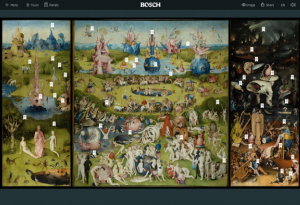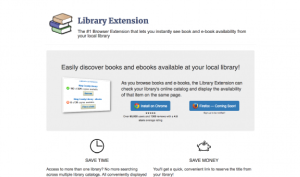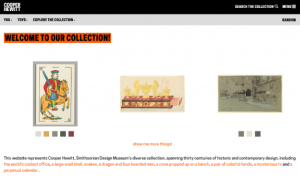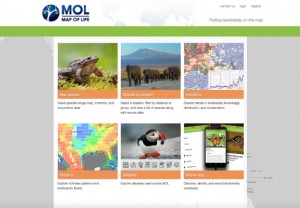Reader Favorites
Back to Top
|
 |
|
We Need Diverse Books
|
Language Arts |
|
|
We dedicated our Fall 2017 special issue of The Scout Report to the topic of banned and challenged books, in honor of the American Library Association's 35th annual Banned Books Week. Our special issue was a reader favorite on social media and no website was more popular than the fabulous blog We Need Diverse Books. Why did we feature this resource in our Banned Books Week issue? As writer Malinda Lo noted in 2014, books that feature diverse characters and tackle issues such as disability, racism, and sexuality are more likely to be challenged than other fiction titles. We Need Diverse Books offers a wonderful way for readers to learn about new books for teen readers that address these issues.
In 2014, young adult fiction writer Malinda Lo penned an essay called "Book Challenges Suppress Diversity." Drawing on the ALA's annual list of the most frequently challenged books, Lo demonstrated that "over half of the Top 100 Banned/Challenged Books from 2000-2009 addressed issues about race, sexuality and/or disability; or were about non-white, LGBTQ and/or disabled characters." We Need Diverse Books, part of the Banned Books Week Coalition, is a grassroots organization that aims to promote diversity and representation in young adult literature. The group defines diversity as "including (but not limited to) LGBTQIA, people of color, gender diversity, people with disabilities, and ethnic, cultural, and religious minorities." The organization's tumblr, which collects articles and reviews from around the web, provides an excellent way for readers, educators, librarians, youth workers, and caretakers to find books that are by diverse authors or feature diverse characters and topics. Recent posts include a profile of author Linda Sue Park for Kirkus Reviews; a story about the the first ever Well-Read Black Girl Festival that originally appeared in Electric Lit; and a story from Indian Country Today about Kinsale Hueston, a Navajo high school student who was recently named one of five National Student Poets.
|
|





|
|
 |
|
Internet Archive: 78rpm Records Digitized by George Blood, L.P.
|
Arts |
|
|
We featured this fabulous collection of digitized 78rpm records in August 2017, shortly after the Internet Archive released this collection. Since then, this collection has grown to include over 60,000 recordings. We love this collection not only because it is a delight to browse, but also because it documents a number of important movements in twentieth-century music history including early girl groups, calypso, gospel, folk, blues, and much, much more. Folks interested in staying abreast about new additions to this collection may want to follow the 78rpm Collection on Twitter: username @great78project.
The Internet Archive recently unveiled this digitized collection of over 25,000 recordings from 78rpm records. First introduced in 1898, 78 revolutions per minute (rpm) records were especially popular between 1920 and the late 1950s and continued to be produced as late as the 1970s. This collection provides a glimpse into a range of music produced throughout the twentieth century, including big band music, polka, gospel, country western, blues, novelty tunes, and much more. Visitors are invited to browse this collection by year (the earliest two records in this collection are George P. Watson's "Sleep Baby Sleep" and "Medley of Emmett's Yodels" from the year 1902), topics & subjects, collection, creator, or language. This collection includes both well-remembered classics by artists such as Bing Crosby, Count Basie, and Judy Garland, as well as a number of more obscure records. There are also a few non-musical recordings, such as Yiddish language lessons and President Franklin Delano Roosevelt addressing Congress in 1942.
|
|





|
|
 |
|
Five Books
|
Language Arts |
|
|
Many of our most popular resources last year were blogs and podcasts designed to help book-lovers find new titles and authors of interests. Of these resources, Five Books stood out from the pack. We were impressed by the sheer breadth of this resource, which provides book recommendations for genres ranging from contemporary fiction to philosophy, to neuroscience, to children's picture books. In addition, we love Five Books because of the sheer number of voices it brings to the table through interviews with a broad range of writers, scholars, and other experts. Finally, this blog is easy (and delightful) to browse, allowing readers to explore books by subject tags like baking & desserts, personality, and childhood favorites.
What are the five best books to read if you want to learn more about Henry VIII? Which five books exemplify the best of comic writing? What about the five best contemporary Scandinavian novels? Five Books has a simple premise: "We ask experts to recommend the best five books in their subject and explain their selection in an interview." The project is based in London and features a U.S. editor; thus, most (but not all) interview participants hail from these countries. Interviewees include authors, academics, entertainers, and public intellectuals. New interviews are released twice a week. Visitors can check out the latest and most recent interviews on the site's homepage and browse previous interviews by subject tags. While those looking for a new read or hoping to brush up on a particular subject or genre may be most attracted to the lists on this page, the interviews also offer an opportunity for readers to learn more about a variety of writers and thinkers.
|
|





|
|
 |
|
 |
|
















